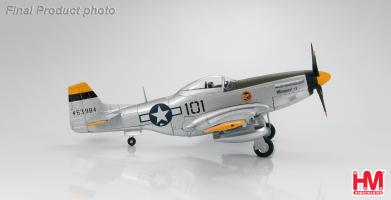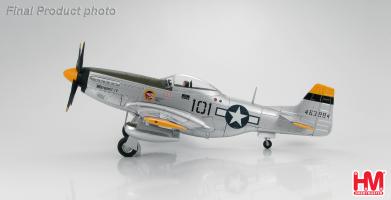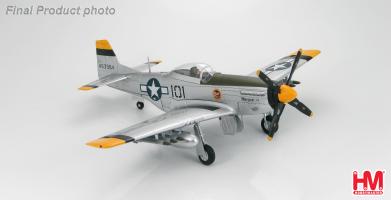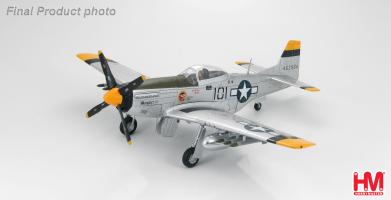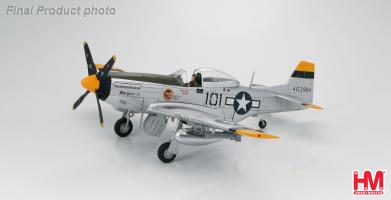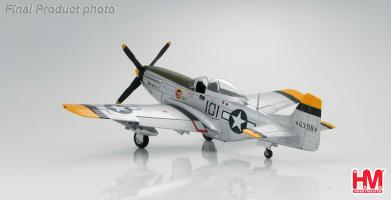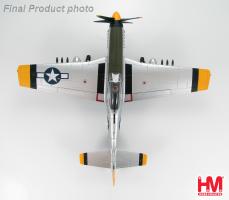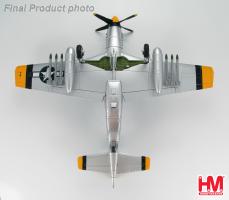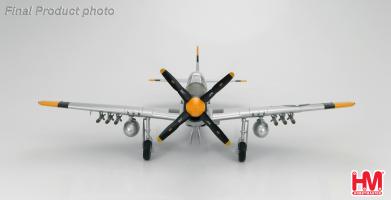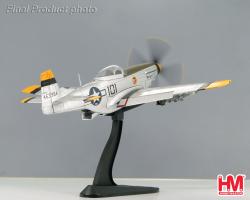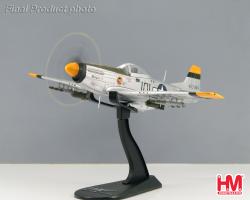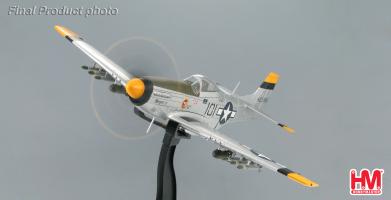Hobby Master Archive
Air Power Propellers 1/48
P-51D
P-51D Mustang 78th FS/15th FG, Iwo Jima, April 1945 Margaret IV
In November 1944 the 15th FG began receiving their new P-51D-20/25 Mustangs. One of three squadrons within the 15th FG was the 78th FS who were called the “Bushmasters” after a very poisonous snake from Central America. The P-51’s from the 78th were numbered 100 - 149. On April 7, 1945 the 15th and 21st FG’s departed Iwo Jima on their first VLR mission (Very Long Range) escorting B-29 bombers all the way to and from Tokyo. The P-51’s were equipped with two 110 gallon drop tanks that would give them the required fuel for the round trip mission. These tanks normally were dropped once they reach landfall. There were slightly more than 100 Mustangs guarding approximately the same number of B-29’s when they encountered Japanese aircraft whose goal was to destroy the bombers. Out of approximately 110 to 125 aircraft sent to intercept the bombers lost 71 confirmed kills as well as 44 damaged with 30 of these were probably destroyed. On the 7th Major James Tapp flying his P-51D “Margaret IV” named after his wife, had 3 confirmed kills and on April 12, 1944 he scored again. This made Tapp the first USAAF pilot to become an Ace while flying over Japan. Major Tapp’s final tally was 8 confirmed and 2 damaged. Six of his victories came while flying “Margaret IV”.
| Added to archive | 2015-11-19 |
| Last modified | 2015-11-19 |
| Leaflet | 2010-06-01 June 2010 |
